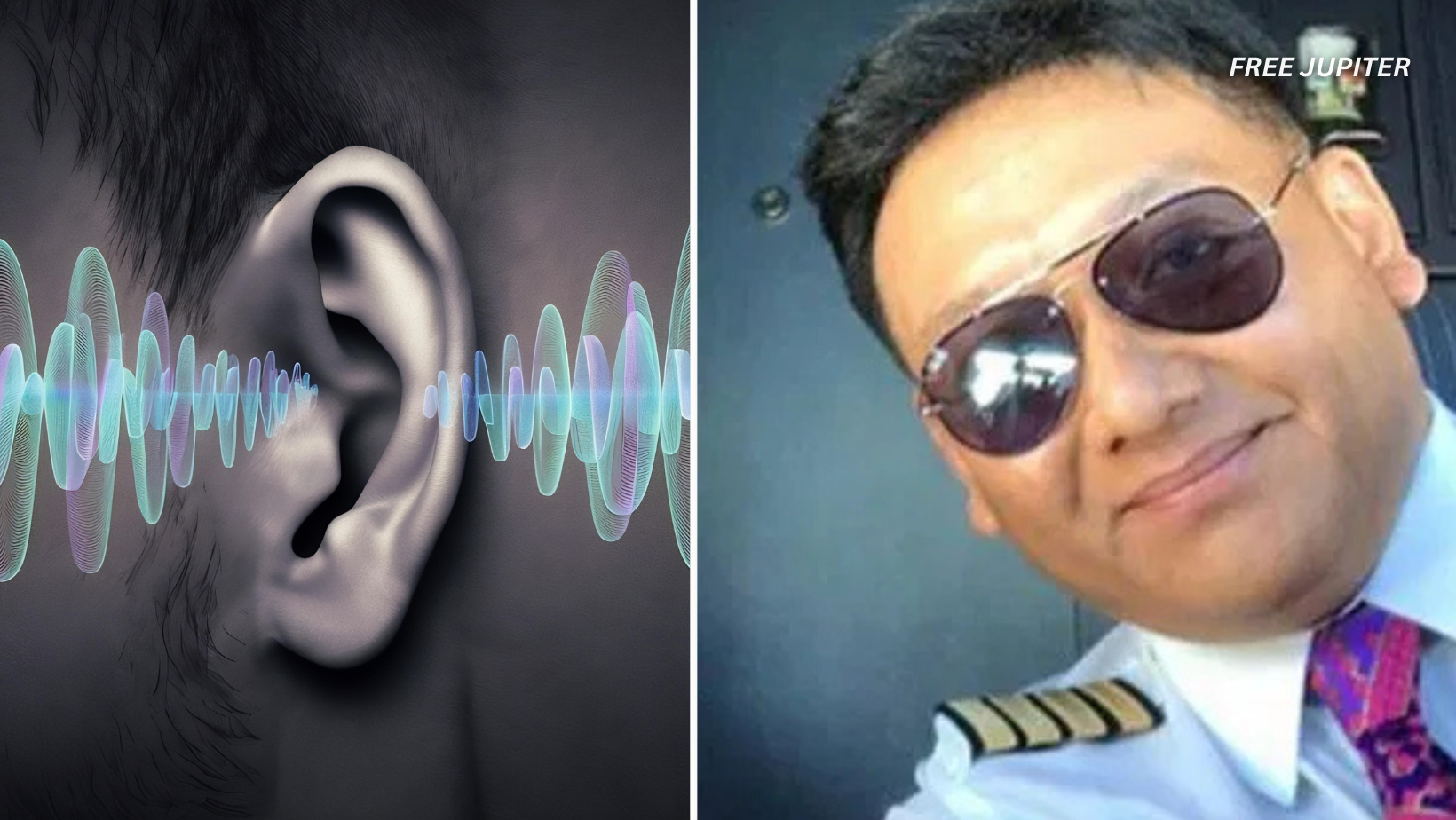Friendly Note: FreeJupiter.com shares general info for curious minds 🌟 Please fact-check all claims—and always check health matters with a professional 💙
On the evening of September 28, 2018, Captain Ricosetta Mafella was preparing to take off from Mutiara SIS Al-Jufrie Airport in Palu, Central Sulawesi. His Batik Air flight was on schedule, the skies looked calm, and the runway appeared unremarkable. Yet something deep within him stirred, an intense, unexplainable urgency to leave the ground faster than planned. Within minutes, his quiet instinct turned prophetic.
Ricosetta Mafella’s Decision That Defied Protocol
Commercial aviation is built on precision. Flight schedules, air traffic control clearance, fuel calculations, and passenger boarding times are orchestrated down to the second. Pilots, as a rule, follow protocol. But that evening, Captain Mafella broke convention. With no obvious external cue, he requested to take off three minutes earlier than scheduled, a seemingly minor adjustment that would later mean everything.
While the ground crew and co-pilot readied the aircraft, Captain Mafella himself jumped in to speed up procedures. He took over some of the co-pilot’s tasks, quickened the taxi, and asked for an expedited clearance from air traffic control. At exactly 6:02 p.m., Flight ID-6231 lifted off from Palu’s runway.
Thirty seconds later, the ground shook with violence.
The Earthquake That Followed
Moments after takeoff, a 7.5 magnitude earthquake hit Palu, collapsing buildings, splitting roads, and triggering a tsunami that killed more than 4,300 people. The very runway Captain Mafella had just used cracked down the middle. Debris was scattered across the tarmac. The control tower swayed, windows shattered, and panic set in across the city.
On the ground, air traffic controller Anthonius Gunawan Agung stayed in the tower to ensure Mafella’s plane had cleared safely. He delayed his own evacuation to maintain communication with the aircraft. When the tower began to collapse, Agung leapt from the fourth floor. He later died from internal injuries. His selfless act has been widely honored, earning him national recognition in Indonesia.
But Captain Mafella’s decision, rooted in nothing but a spiritual prompting, meant his 148 passengers and crew avoided one of the worst aviation disasters that never happened.
It wasn’t the first time instinct, whether from faith, training, or intuition, had played a role in averting tragedy. Aviation history is peppered with similar moments where pilots relied not on instrumentation alone, but on internal cues that something was off.
United Airlines Flight 232: Calm Amid Catastrophe
On July 19, 1989, United Airlines Flight 232 suffered a catastrophic engine failure over Iowa. The DC-10 lost all hydraulic systems, making normal flight control impossible. Captain Al Haynes and his crew, using only throttle adjustments, managed to guide the crippled aircraft toward Sioux City. It crash-landed on the runway, breaking into pieces, but thanks to Haynes’ calm and improvisation, 184 of the 296 people onboard survived.
Haynes would later say that the only reason he was able to respond so effectively was because of his crew’s teamwork and the training scenarios they’d once dismissed as unlikely.
US Airways Flight 1549: “The Miracle on the Hudson”
In January 2009, Captain Chesley “Sully” Sullenberger made a now-iconic emergency landing in the Hudson River after a bird strike disabled both engines on US Airways Flight 1549. With seconds to act, Sully assessed that returning to LaGuardia or diverting to Teterboro would end in disaster. He made a snap decision to land in the river, a choice that saved all 155 people aboard.
Post-incident simulations suggested other options might’ve worked. But Sully insisted his decision was based on real-time judgment, not theoretical projections. He trusted his experience and intuition over textbook protocol.
Japan Airlines Flight 123: When No One Listened
Sometimes, instinct doesn’t get followed, and the results are catastrophic. In 1985, Japan Airlines Flight 123 suffered a decompression event due to a faulty rear bulkhead repair. The pilots struggled with the controls, and even as systems failed and odd vibrations occurred, the flight stayed on course. Despite warning signs, a timely emergency landing was not attempted. The aircraft crashed into Mount Takamagahara, killing 520 people in the deadliest single-aircraft accident in history.
Investigators later noted that while there were signs something was wrong, the flight crew didn’t act soon enough, possibly due to over-reliance on systems and disbelief that a critical failure was in progress.
The Thin Line Between Protocol and Captain Ricosetta Mafella’s Instinct
These stories speak to a truth within aviation, and within life more broadly: sometimes instinct cuts through the noise. In Captain Ricosetta Mafella’s case, his “sense” couldn’t be measured by instruments or explained by logic. Yet it saved lives.
What’s especially remarkable is how quiet the threat was. There were no tremors before takeoff. No visible changes in wind, weather, or passenger behavior. Just a pilot in a cockpit who felt something rise in his chest, something that told him: leave now.
He didn’t argue with it. He didn’t delay. He acted.
The Airport That Wasn’t Meant to Be Used Again
The Palu airport sustained serious damage in the quake. Parts of the runway became unusable, buildings cracked, and the terminal was evacuated. If Captain Mafella’s flight had been delayed just minutes, it would’ve been stuck on the ground or worse, mid-takeoff when the ground split apart.
The timing wasn’t lucky. It was precise. It was eerie.
That night, people onboard Batik Air Flight ID-6231 didn’t even realize they’d escaped a disaster until they saw the news after landing. They only later learned that their departure was the final commercial takeoff from Palu before operations shut down indefinitely.
Captain Ricosetta Mafella, A Hero, But Not the Only One
While much has been said of Captain Mafella’s courage, it’s important to recognize that disasters often reveal a chain of heroes. Anthonius Gunawan Agung’s sacrifice is remembered as one of quiet bravery. He did not flee when he had the chance. He stayed so others could fly.
In that moment, two men made split-second decisions. One was airborne, the other on the ground. Both changed history.
Captain Mafella’s story sparked conversations across the aviation world. How do we train pilots to balance protocol with gut instinct? Should spiritual intuition have a place in the cockpit? Or is it something that simply coexists with experience, silently shaping decisions from behind the scenes?
These questions don’t have easy answers. But his case joins a small group of stories that continue to remind us: human decisions still matter in the most technical of environments.
When Seconds Matter
Looking back, it’s tempting to view Captain Mafella’s choice as destiny, divine intervention, or coincidence. But what matters most is that he listened. He didn’t brush off that inner nudge. He didn’t wait for proof. And in that moment of action, 148 lives were lifted into the sky, just ahead of a nightmare.
In a world increasingly governed by logic, data, and checklists, perhaps it’s worth remembering that the human heart still beats behind every cockpit door. Sometimes, that heartbeat can hear something before the ground shakes.










